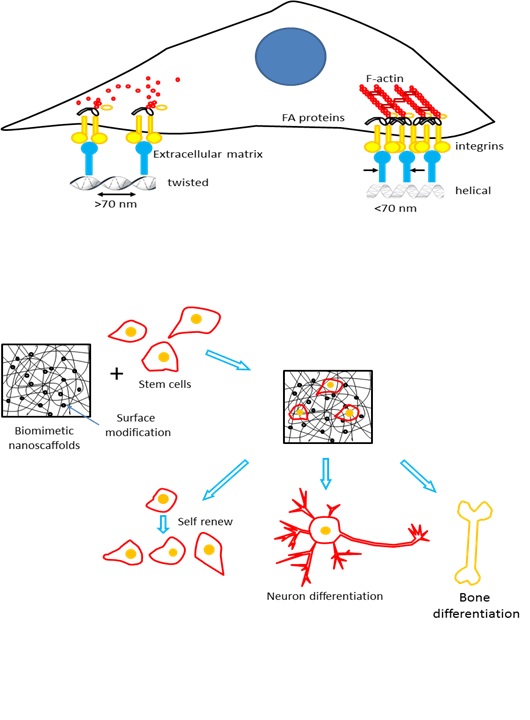How nanotechnology can advance regenerative medicine
November 5, 2013

Summary figure. Nanotechnology regulates stem cell function. (A) Suitable spacing for integrin activation and integrin-mediated cell adhesion, cytoskeleton organization and cell spreading. (B) Modified nanoscaffolds regulate stem cell self-renewal, neural differentiation and osteogenic differentiation. (Credit: Yang-Kao Wang)
Nanotechnology may provide new strategies for regenerative medicine, including better tools to improve or restore damaged tissues, according to a review paper that summarizes the current state of knowledge on nanotechnology with application to stem cell biology.
Researchers have found that the adhesion, growth, and differentiation of stem cells are likely controlled by their surrounding microenvironment, which contains both chemical and physical cues. These cues include the “nanotopography” of the complex extracellular matrix or architecture that forms a network for human tissues.
In their review paper published in the journal Science and Technology of Advanced Materials (open access), Yang-Kao Wang and colleagues describe studies showing how this nanotopography (which includes nanosized pores, grooves, ridges, etc.) plays important roles in the behavior and fate of stem cells.
The authors also discuss the application of nanoparticles to stem cell isolation, tracking and imaging; how to translate nanotechnology from two to three dimensions; and the potential limitations of using nanomaterials in stem cell biology.
The paper concludes that “understanding [the] interactions of nanomaterials with stem cells may provide knowledge applicable to [the development of improved] cell-scaffold combinations in tissue engineering and regenerative medicine.”